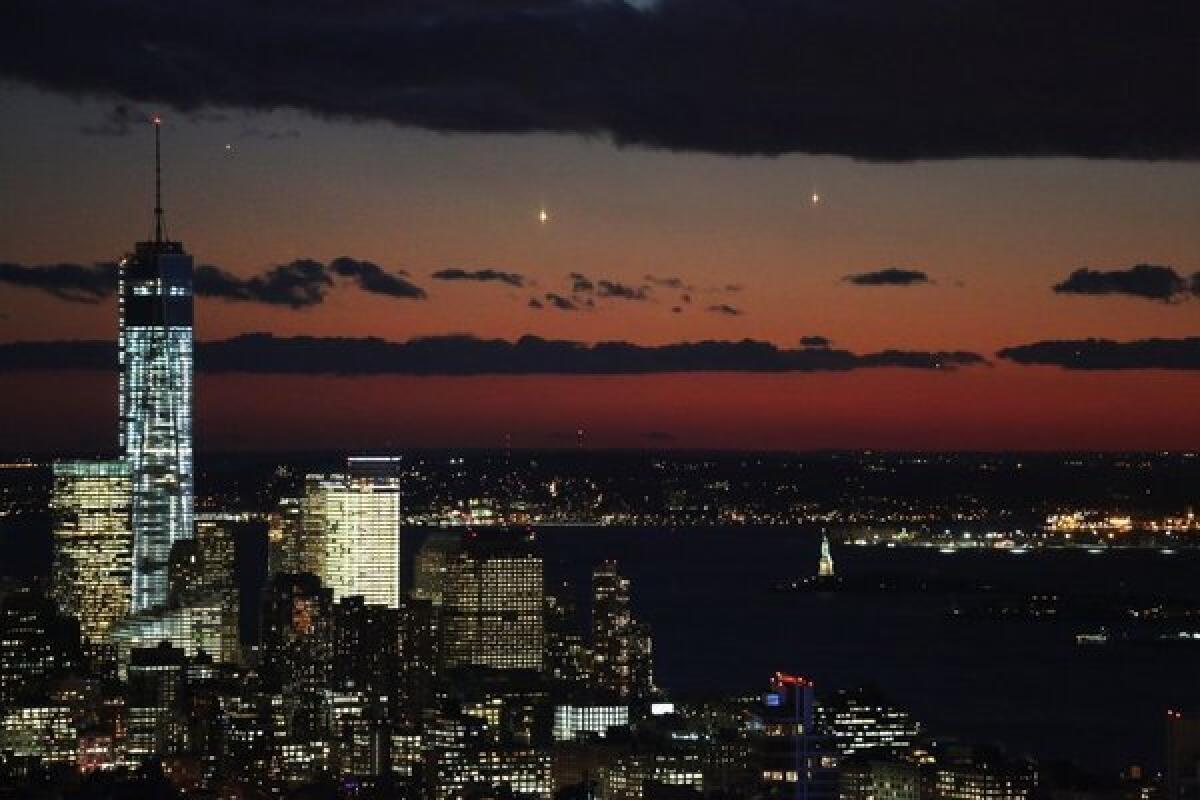Skyscraper envy

- Share via
One World Trade Center in New York has been officially named the tallest building in the U.S., snagging the title from its rival, the Willis Tower in Chicago. So declared the Council on Tall Buildings and Urban Habitat this week.
Technically, the roof of the Willis Tower — better known by its former name, the Sears Tower — rises to 1,451 feet, and One World Trade Center stands only 1,335 feet high. But the Trade Center tower architects argued that the spire on the roof, which takes the structure to the symbolically significant height of 1,776 feet, should be counted as part of the building. The antennas on the Willis Tower are considered, well, just antennas and don’t count toward height.
We’re skeptical about the functional difference between the Chicago antennas and the New York spire — they’re both up there helping in the transmission of broadcast signals — and we’re really surprised to find out that there’s a Council on Tall Buildings. But mostly we’re thinking: Does size really matter (to anyone besides the tall council people and the architects and so on)? One World Trade Center, by the way, will be only the third-highest building in the world, dwarfed by structures in Dubai, United Arab Emirates, and Mecca, Saudi Arabia, that scrape the stratosphere. The Willis Tower will rank 10th behind buildings across the Middle East and Asia.
The race for a taller habitable tower seems like a vestige of the last century, when the Metropolitan Life Building, the Chrysler Building, the Woolworth Building, the Empire State Building and others competed for the title of tallest building in the world. That was when the height of a city’s skyscrapers was the measure of its civic robustness, when the competition was fueled by old-school municipal chauvinism: Mine is bigger than yours. That lust for the sky spawned a panorama of landmark buildings in Chicago and New York, among other places, including the Willis Tower and the predecessors to One World Trade Center. Their physical prominence made them stunning and, as we learned on 9/11, vulnerable.
The developers of One World Trade Center point out that it is a model of sustainable design and safety. And all that technology is good to have. If we must compete in the urban landscape, how about making the goal “My carbon footprint is smaller than yours”? Not to brag about Los Angeles, but the most striking recent landmark here is Disney Hall, which has nothing to do with height and everything to do with an arresting use of shape and material.
Yes, vertical development will help the large metropolis — Los Angeles and Santa Monica included — cope with the need to build densely near transit hubs. But building tall to one-up another structure no longer seems like a top priority.
More to Read
A cure for the common opinion
Get thought-provoking perspectives with our weekly newsletter.
You may occasionally receive promotional content from the Los Angeles Times.










